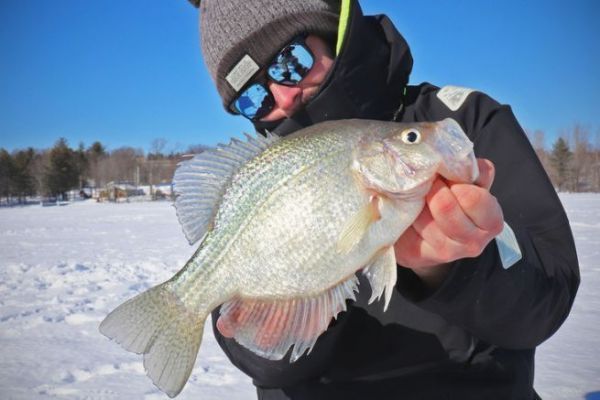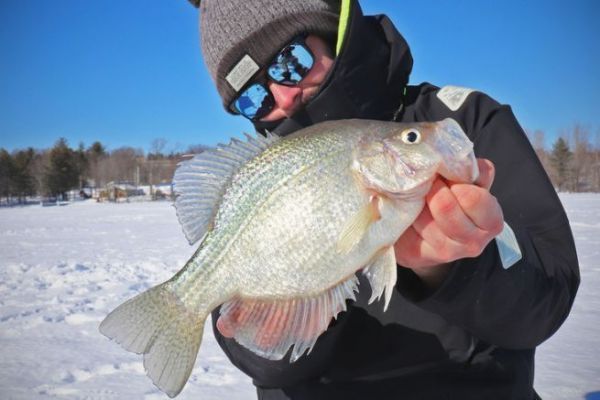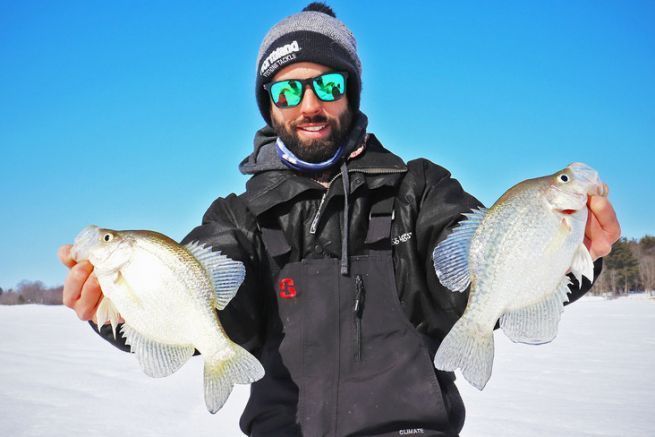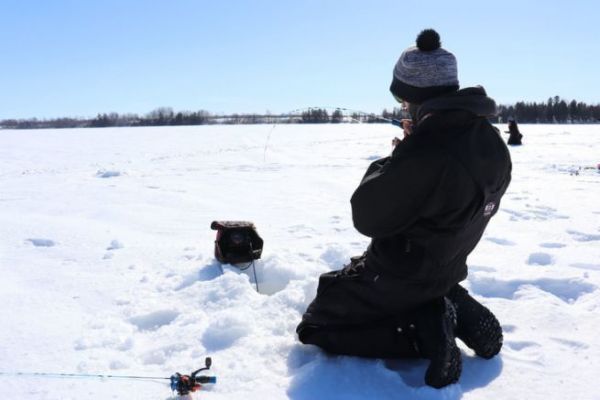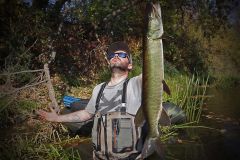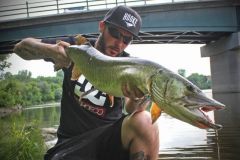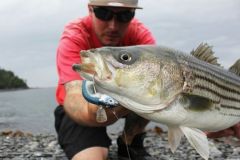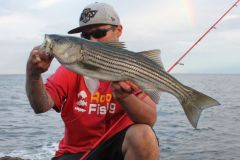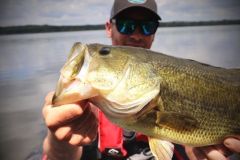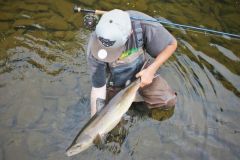The principle of ice fishing
Ice fishing is practised as soon as the ice is thick enough to access it safely, i.e. from around 12 cm. It involves making a hole in the ice and fishing through it, but it's not as easy as it sounds, and there are some subtleties to this type of fishing.
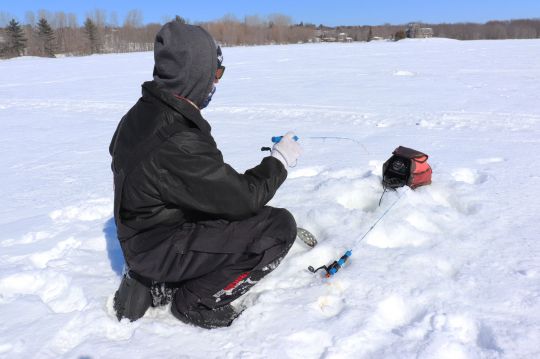
Where to go ice fishing?
It's disconcerting to find yourself faced with a white expanse devoid of any visual indicators to help you find a suitable fishing spot, such as weed beds, eddies, trees, etc., which you can't even see.

A good knowledge of the area to be fished, scouting during the summer or the help of applications that provide bottom indications, such as Navionics, are invaluable aids in preparing an ice-fishing session and defining the area to be fished. It's therefore vital to choose the right spot, preferably a deep area. All the more so as in winter, fish are much less mobile and tend to congregate. Here, it's even more so, as you're dependent on the holes drilled in the ice, and it's complicated to change zones afterwards.
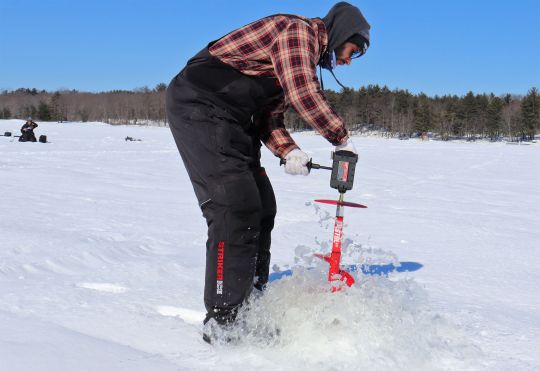
The principle is to make several holes and alternate between them until you find fish. Even if the water is very cold and the fish have slowed down their metabolisms, they remain mobile and you need to alternate from one hole to the next to maximize your chances of catching them. Often, you'll catch several fish in a row, followed by a long period without touching them, hence the need to alternate between holes.
Fishing action
The lure's animation is vertical only, so there's no possibility of linear animation. It consists in attracting fish by intensive jigging. Then, once a fish is detected on the echo sounder, provoke a strike by gently bringing the lure to the surface. In this way, you hope to trigger a reflex attack from the fish, which sees its prey escape.

 /
/ 